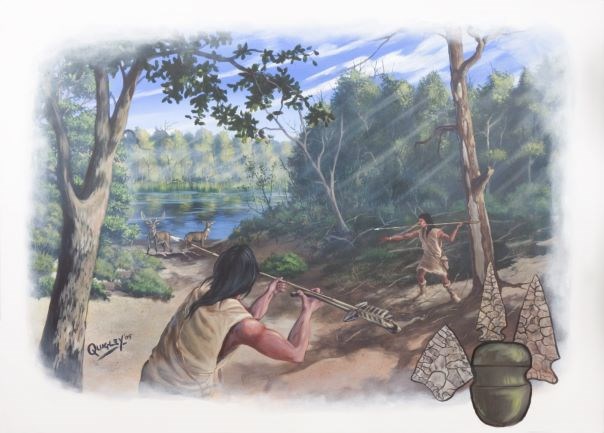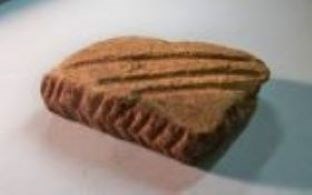
Dean Quigley pop into your head are “old”, “ancient”, or even “outdated”. While these are perfectly accurate synonyms for “archaic” in our day-to-day lives, in archaeology the word means much more – it is the name of a whole culture and time period that once thrived in the Macon Plateau from 9,600 – 1,000 BCE. The Archaic period was unique from the Paleo Indian period before it by the differences in stone point types, the appearance of new artifacts, and changes in economic orientation. Imagine living in the Macon Plateau when the last Ice Age began receding. Everything you and your ancestors have taken for granted changes. As the last glaciers retreat from the North American continent, the climate warms to temperatures similar to what the southeast experiences today. Mammoths and other large game that you’ve relied upon for your food are now gone. How would you adapt to these changes to survive? Early Archaic Subperiod (9,600 - 6,000 BCE) For the Early Archaic Indians, they adapted to their new environment in two ways: by living in larger bands than the Indians from the Paleo Indian time period, and by trading resources between bands. The range of tools the Archaic Indians used included knives, drills, choppers, flake knives and scrapers, gouges, and hammer stones. Wet sites, such as the Windover Site near present-day Titusville, Florida, helped produce exceptionally well-preserved organic materials such as bone points, atlatl hooks, barbed points, fishhooks, pins, shell adzes, wooden stakes and canoes, and fragments of cloth and woven bags. These discoveries reflect a residential, stable hunting-and-gathering band society that seasonally occupied base camps along major water courses. Middle Archaic Subperiod (6,000 - 4,000 BCE) The Middle Archaic Indians’ diet consisted of a variety of animals like deer and small game, along with gathered wild plants such as nuts, fruits, berries, and seeds. Archaic Indians were also the first to collect shellfish within river valleys and along the seacoast. A new cooking technology of the time was the boiling stone. A hole was drilled into a flat, round stone using a pump drill. Once the a stone was hot, it was removed from the fire with a stick and placed in a deerskin-lined hole in the ground. The contents within the deerskin, probably stew or water, would rapidly boil as the heat transfered from the hot stone to the food around it. Archaeologists excavating remnants of Archaic “base” camps have discovered storage pits, remains of house floors, and prepared burials at certain sites. These remains along with other artifacts from these sites indicate a moderate increase of trading between bands for non-local chert materials. Historians believe that the increase of trade during this subperiod was due to increased band populations that lived in sedentary base camps. 
NPS The Late Archaic Indians became more specialized in their diets based on their locations throughout the southeast. All bands still used hunting-and-gathering strategies for survival, but several began experimenting with horticulture as well. The Late Archaic Poverty Point culture in the lower Mississippi River Valley developed large permanent towns with satellite communities. These towns were linked by trade in exotic nonlocal lithic raw materials and finished goods. The treatment of burials at the Green River sites, some containing exotic trade materials, may reflect the beginnings of a hierarchy of individuals whose sole responsibility was the establishment and maintenance of these trade networks. At the end of the Late Archaic subperiod fiber-tempered ceramics – both plain and decorated – appeared along the South-Atlantic coast. This ceramic technology rapidly spread westward to the coastal plain of Alabama and Mississippi and southward into Florida, soon reaching to most of the southeastern United States. This became the tipping point between Archaic hunting-and-gathering societies and the emergence of settled Woodland period villages and communities that focused on horticulture along with hunting and gathering. The Late Archaic subperiod was also when the beginnings of the southeastern mound-building tradition that would be further elaborated on in the succeeding Woodland and Mississippian periods. The Archaic Indians may have an ancient name, but they were vital forerunners of future cultures to come. |
Last updated: July 26, 2023
